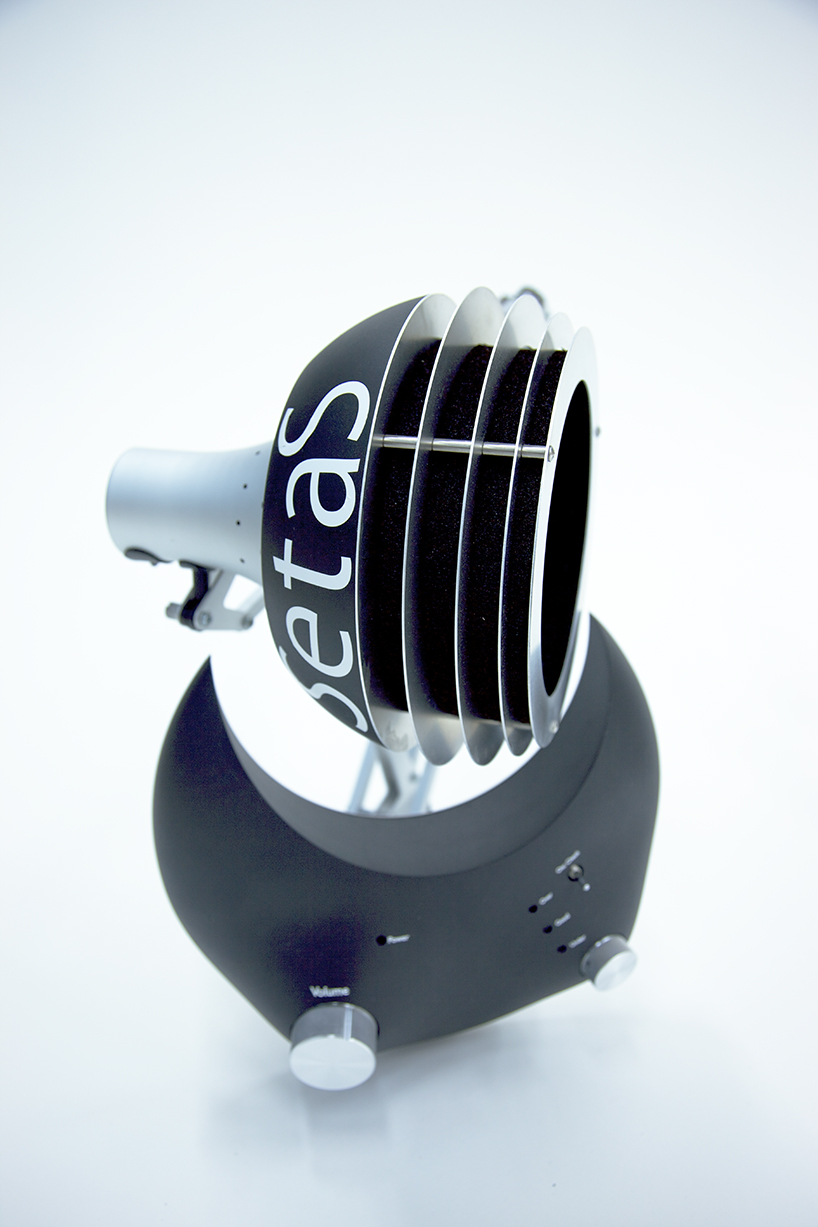
sonar by _tngc from uk
designer's own words:
In general, the stational type loud speakers provide entire space with a sound. On the other hand the small mobile devices like headphones or earphones are designed to provide only a person with a sound. Then I thought if this correlation between the types of devices and the types of targets become to be replaced each other, perhaps I can create an interesting and useful sound experience. So I imagined two different types concepts of speaker devices. One was the concept of stational type speaker provides a person with a sound and one another was the concept of headphone like wearable device provides a space with a sound. I’ve focused on the former concept because in simply I could not get a good idea for the later concept but I could get concrete ideas about the stational type loud speaker providing a sound only in limited area.
Then I’ve designed this directive speaker for the daily use. It may be easier to understand it as a speaker that emits a sound like a laser beam. The speaker utilizes technologies for generating simulated sound waves by lining up a large number of ultrasonic elements and adjusting the wavelengths of ultrasonic sound to the audible spectrum. The speaker is designed for emitting a sound in a limited space by irradiating a sound within an extremely limited scope. With the current prototype, the sound leaks when reflected onto the audience and walls, the resolution of low-pitch sound is low, and other problems are also evident. However, it offers a realistic sensation that almost feels like being tickled. SONAR creates a brand-new listening experience by creating a personal audio space that does not cover the ears.
This speaker uses a unique technology to control ultrasonics. It has a lot of aligned ultrasonic transducer in the unit. The control board installed in it arranges the waveform of the ultrasonic into the audible waveforms. Ultrasonic is quite high frequent waves and its wavelength is very short so it has strong straightness. As a result audible area of the speaker is only the direction that the speaker facing. This is the mechanism of its directional sound system for limited sound space.
There are two types of speakers used in our daily lives, namely the stationary type and the concealed type, such as earphones. I have sometimes experienced dissatisfaction with the functions of these two types of speakers. One example is when earphones cannot be used, even though several people wish to listen to different music in one space. If we wear earphones, we might not notice when someone is calling us or if the phone is ringing. I decided to create this piece because I wanted earphones that did not cover the ears, solving this problem. The design factor or image is that of headphones that are not worn over the head.
When I kept coming across instances in my daily life where ordinary speakers seemed useless, I started searching for technologies that could resolve the situation. Directive speakers are already available commercially, but almost all of them are used for making announcements and other business purposes, and they are not intended to be used by consumers for enjoying music. I used my imagination to create forms suited to the use of the technologies in our daily lives, and to infuse the images of sounds being emitted in forms such as lasers and beams. In this way, I attempted to match and fuse the forms and technologies. I believe that the trial speaker has a solid identity, while also taking usability into consideration.
Styling appearance 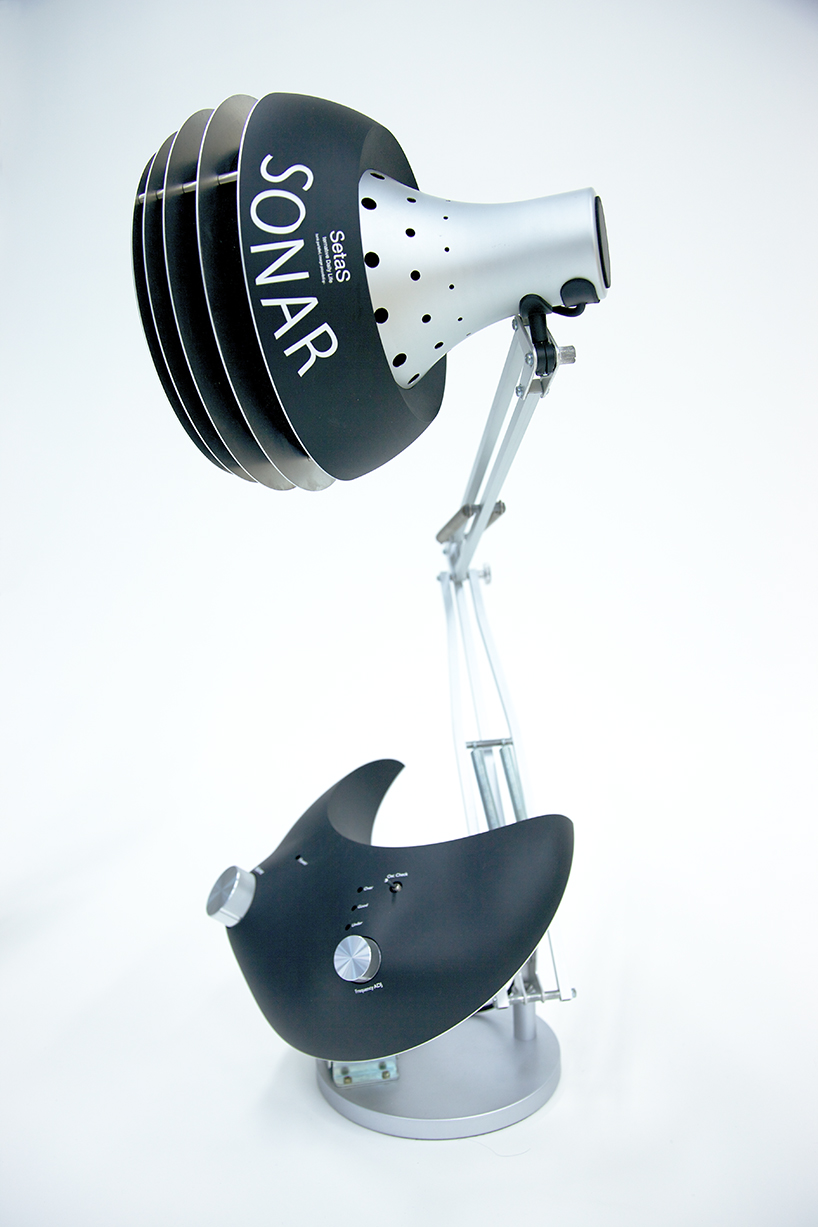 Styling appearance
Styling appearance 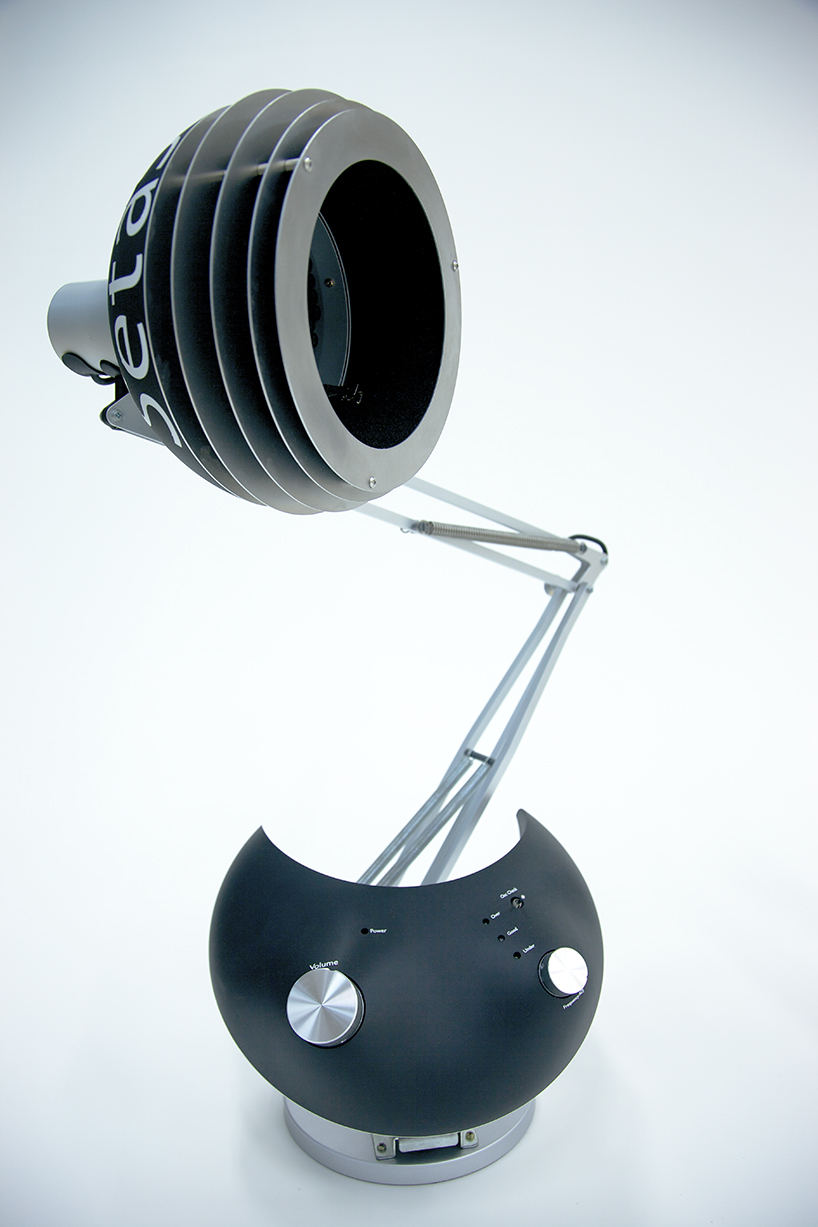 Styling appearance
Styling appearance 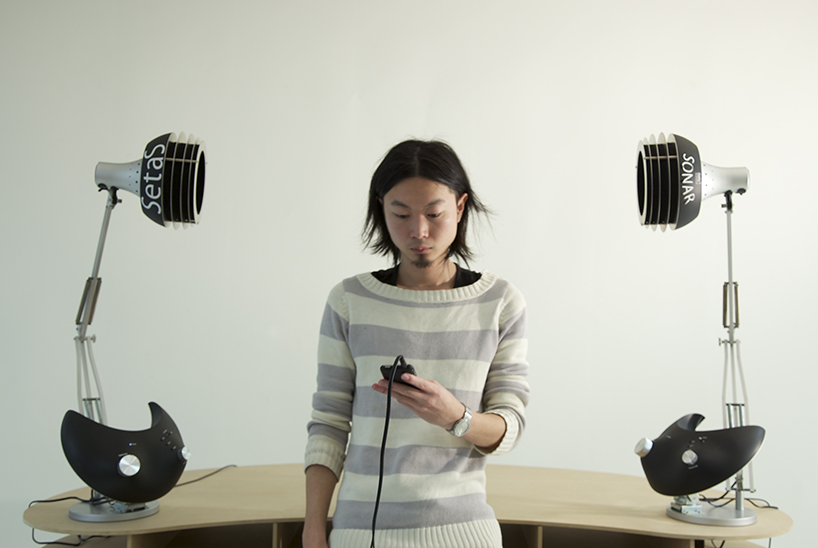 Using Image
Using Image 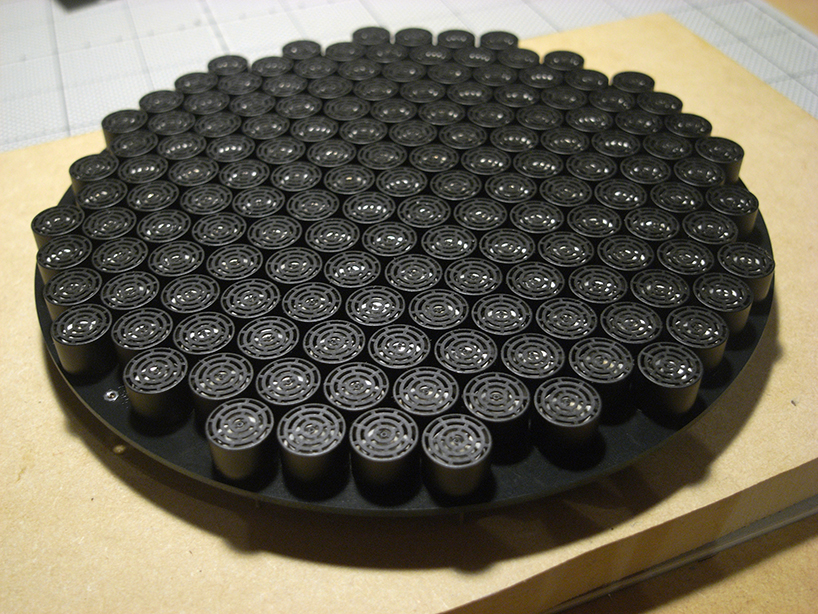 Internal PCB of ultrasonic transducer
Internal PCB of ultrasonic transducer 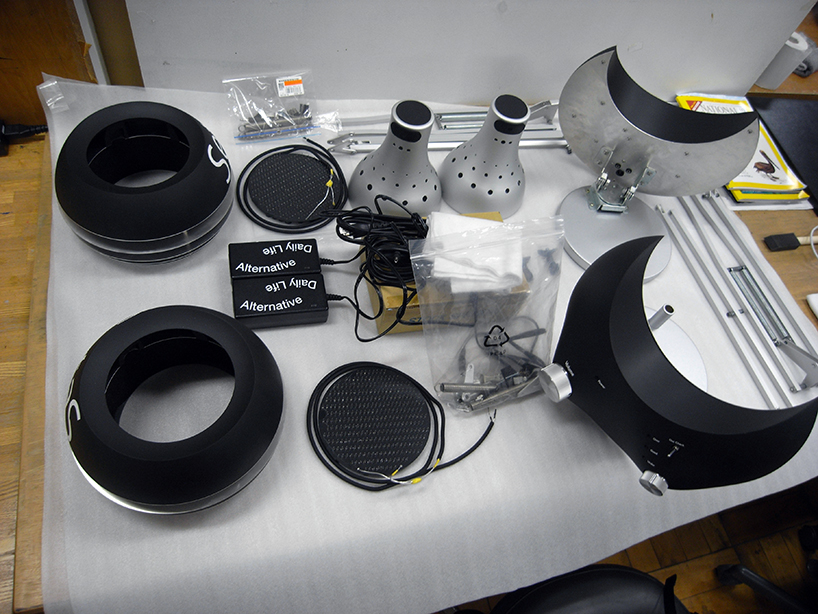 Assembling process
Assembling process